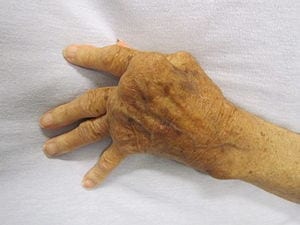
But will it really work?
Research suggests that software might be better than law-enforcement officials at detecting a lie. But will it really work?
A popular school of thought, dramatized in the recent TV drama Lie to Me, is that a careful study of facial expressions—especially eye movements—tells investigators if a perp is dissembling. Reality is neither as dramatic nor as decisive. Even experienced investigators average only about a 65 percent success rate, according to researchers. Could computers do a better job?
Researchers at the University at Buffalo, The State University of New York (U.B.), claim their video-analysis software can analyze eye movement successfully to identify whether or not a subject is fibbing 82.5 percent of the time. The researchers, who first presented their (still unpublished) results at the 2011 IEEE International Conference on Automatic Face and Gesture Recognition a year ago, believe they have laid the foundation for a more extensive study that will include a larger sample and take into account body language in addition to eye movement to determine whether new technologies can help interrogators in their search for the truth.
The 40 interviews were conducted by Mark Frank, a U.B. professor of communication and a study co-author, and included a diversity in age, gender and ethnicity. Prior to the interview, each subject was given the opportunity to “steal” a check made out to a political party or cause that the volunteer strongly opposed. Afterward, subjects sat down with a retired law-enforcement interrogator. The interviewer first posed conversational questions unrelated to the possible theft, to establish a baseline of normal eye movement, and then asked whether the interviewee had taken the check.
Those subjects who successfully lied received a monetary reward for themselves as well as for a group they supported. Those caught lying received nothing and were told that money would instead go to the party or group they opposed. The software compared each subject’s baseline eye movement with those observed during the questions about the check. If the computer detected a large deviation, the researchers noted this change and flagged that person as a potential liar.
The work of Paul Ekman, professor emeritus of psychology at the University of California, San Francisco, School of Medicine served as an inspiration for the study. Ekman’s specialty is the study of emotions and their relation to facial expressions, and his work formed the basis of the techniques used by fictional psychologist Cal Lightman in Lie to Me. Frank performed postdoctoral research at U.C. San Francisco’s psychiatry department under Ekman’s guidance.
Ekman’s focus on brief, involuntary facial expression is not without critics. One former FBI special agent finds a fundamental flaw with the Buffalo study: “One problem with this research is its overreliance on the face as the only place to evince information from the body,” says retired FBI counterintelligence special agent Joe Navarro, who spent 25 years with the bureau and was a founding member of its Behavioral Analysis Unit. “I can tell you as an investigator and somebody who’s studied this not just superficially but in depth, you have to observe the whole body; it can’t just be the face,” he says, adding that a failure to take body language into consideration could lead to “an inordinate amount of false positives.”
Read more . . .
Bookmark this page for “lie detection” and check back regularly as these articles update on a very frequent basis. The view is set to “news”. Try clicking on “video” and “2” for more articles.










